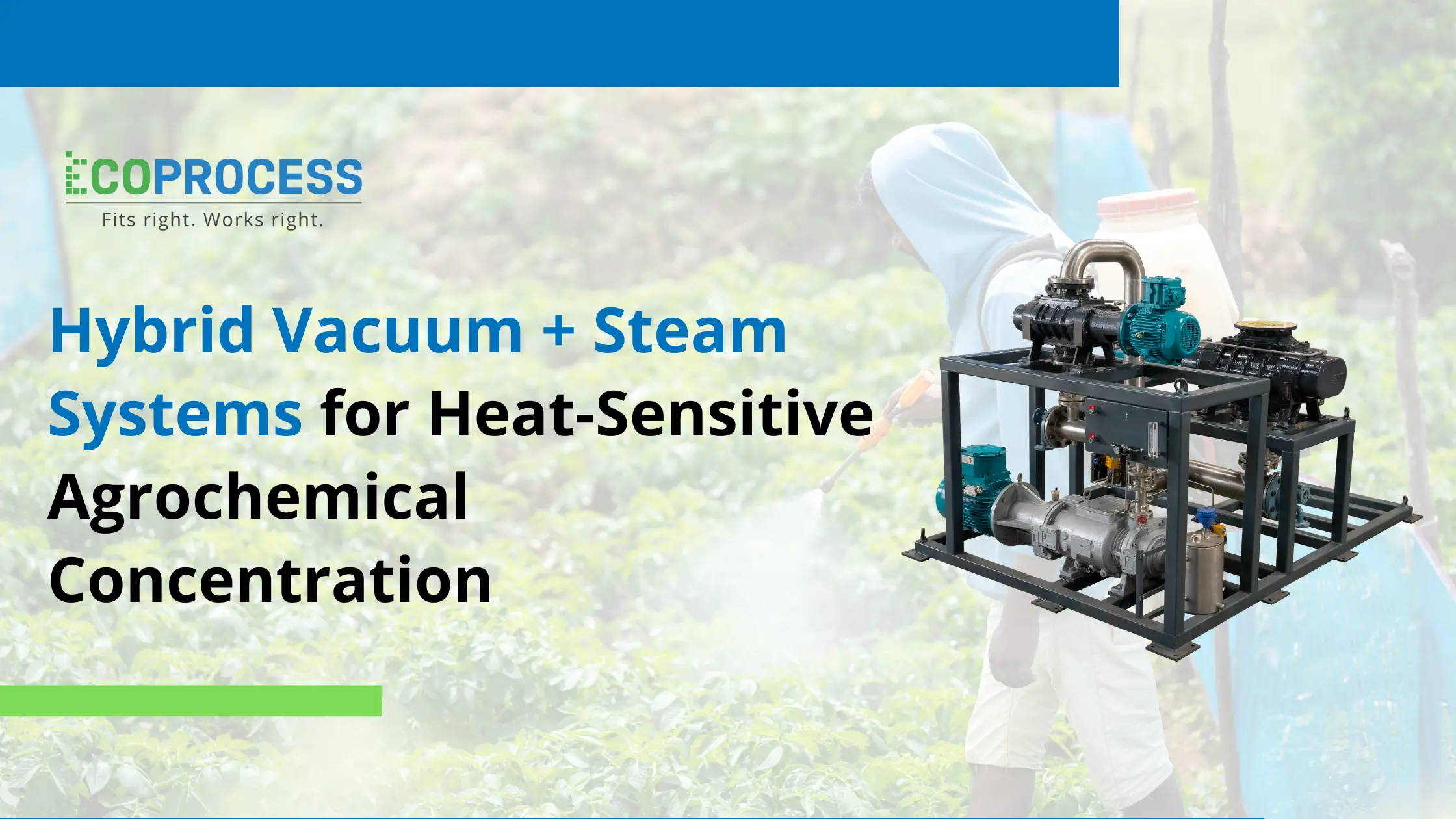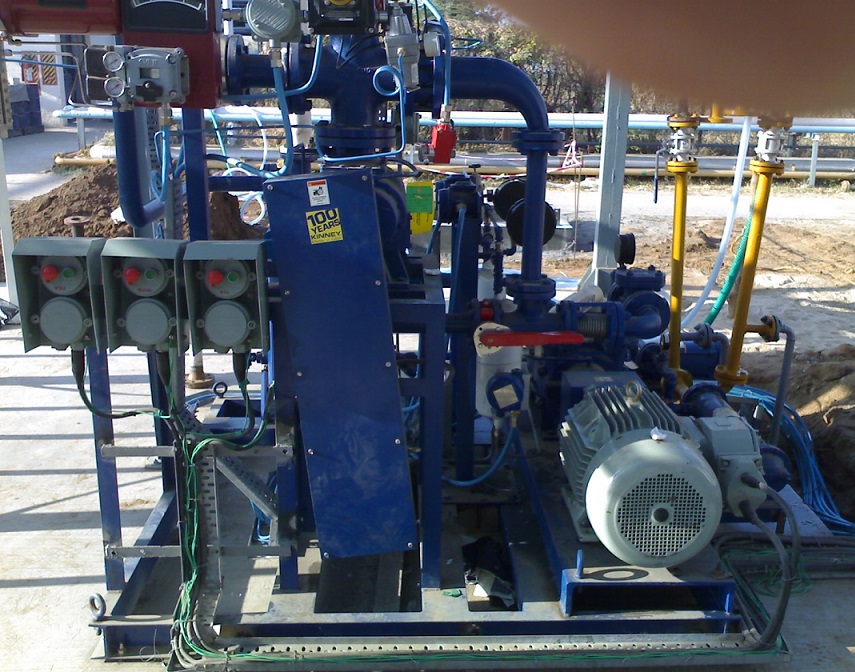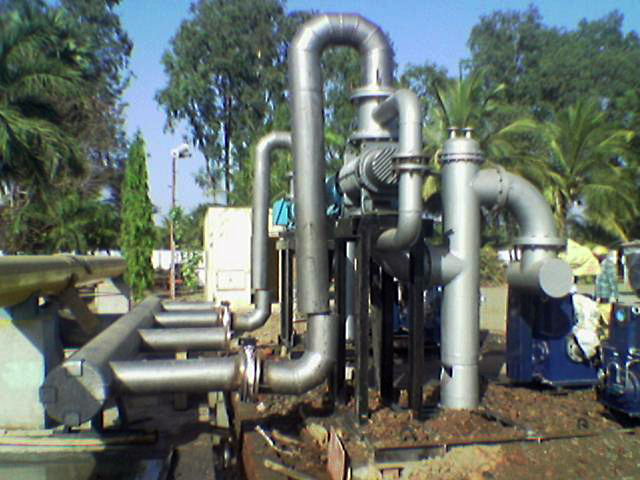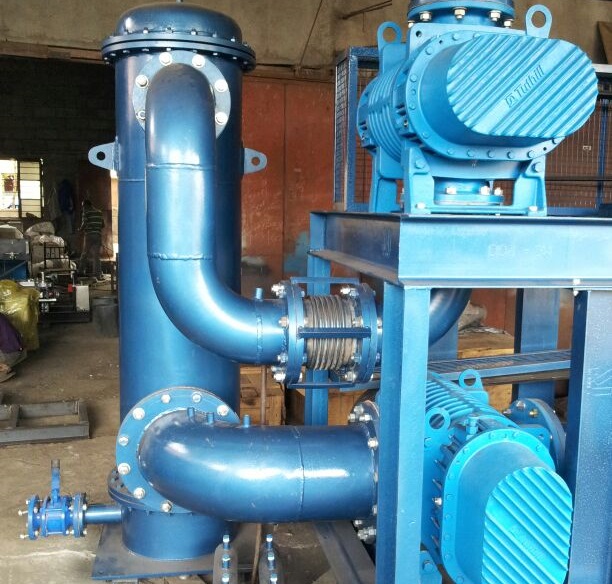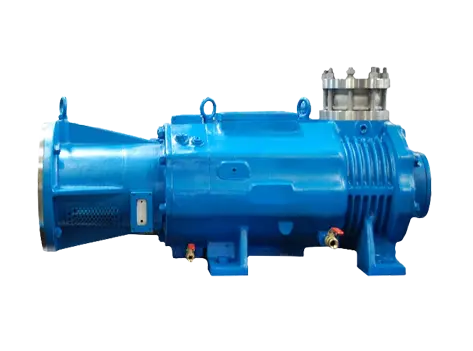
Dual-Stage Vacuum Systems in Agrochemical Condensate Recovery
In the agrochemical world, production isn’t simple, it involves everything from chemical synthesis to separation, purification, and solvent recovery. Along the way, plenty of vapors and condensates form, and if those aren’t captured properly, you lose product, waste energy, and risk harming the environment.
That’s where dual-stage vacuum systems come in. By running at two different pressure levels, they’re able to pull in more solvent, improve purity, and keep the whole setup running efficiently even when the chemistry gets tough.
Whether the plant is making pesticides, herbicides, or fertilizers, this kind of vacuum technology helps keep the process cleaner, more sustainable, and a lot more cost-effective.
Benefits of Dual-Stage Systems
A dual-stage vacuum system basically links two vacuum pumps (or compression stages) in series so it can reach deeper vacuum levels and run more steadily than a single-stage setup. The first stage takes care of the heavy vapor load, while the second one fine-tunes the pressure to hit the exact vacuum needed for drying or solvent recovery.
1. Better Solvent Recovery
In agrochemical plants, solvents like toluene, hexane, and acetone are everywhere used for extraction, reactions, and washing. The problem is, they often evaporate during processing. With a dual-stage vacuum system, those vapors get pulled in and condensed efficiently, cutting down on losses and improving yield. Because the pressure is lower, condensation happens at cooler temperatures, which helps protect heat-sensitive materials.
2. Steadier Operation with Heavy Vapor Loads
These systems also handle demanding conditions much better. In operations where vapors and non-condensable gases mix, single-stage pumps can struggle you’ll see backflow, cavitation, or pressure swings.
Dual-stage systems split the workload, keeping everything smoother and more stable. This setup also means less stress on the pumps, longer equipment life, and fewer maintenance stops, a big deal for plants that run nonstop.
3. Consistent Product Quality
Vacuum levels directly affect distillation, drying, and crystallization steps that determine how pure and uniform the final product turns out. With deeper and steadier vacuum control, you get tighter control over moisture and evaporation rates, which translates into consistent quality from batch to batch.
4. Lower Energy Use
Even though it looks like a more complex setup, a dual-stage vacuum system is actually more energy-efficient over time. The first pump clears out most of the vapor load, so the second one can operate in a low-pressure range where small power inputs make a big difference. When combined with VFDs (variable frequency drives) and smart pressure controls, these systems can cut energy use by as much as 30% compared to standard single-stage units.
Vacuum Design Considerations
When setting up a vacuum condensate recovery system in an agrochemical plant, a few design factors really make or break performance, reliability, and safety.
1. Material Compatibility
Agrochemical processes deal with all kinds of harsh vapors — acids, chlorinated solvents, and reactive organic compounds. That’s why every part that touches the process stream needs to handle corrosion. Most engineers go with stainless steel (SS316L), PTFE coatings, or special alloys built for chemical resistance.
If you’re using oil-sealed pumps, proper filtration is key to keeping the oil clean. For a cleaner, lower-maintenance setup, dry-running pumps like screw or claw types are usually a smarter pick.
2. Condensate Management and Separation
The efficiency of solvent recovery depends a lot on how well vapors are cooled and separated. Adding surface condensers or heat exchangers to the vacuum system helps turn those vapors back into liquid form.
In dual-stage setups, you’ll often see a knockout pot or inter-stage condenser between stages. That step strips out most of the condensables before the gas hits the high-vacuum section, preventing overload and keeping the vacuum stable.
3. Pressure and Temperature Control
Most agrochemical operations run between 1 and 100 Torr, depending on what’s being processed. If the vacuum is too deep, you risk unwanted evaporation; if it’s too weak, efficiency drops. Advanced control systems with transmitters and automated valves keep everything balanced, protecting both the product and the equipment.
4. Environmental and Safety Measures
Since many agrochemical vapors are toxic or flammable, vacuum systems need to be designed with gas-tight seals, proper scrubber or flare connections, and explosion-proof motors. Recovering and reusing solvents doesn’t just save raw materials it also cuts VOC emissions and waste disposal costs, helping plants stay compliant and sustainable.
Case Highlights from Agro Plants
Case 1: Solvent Recovery in Pesticide Manufacturing
A pesticide facility making organophosphate compounds decided to switch from single-stage to dual-stage vacuum pumps for solvent recovery. The change paid off fast, solvent yield went up by about 25%, and total energy use dropped roughly 15%.
The key was adding an inter-stage condenser, which trapped up to 95% of the acetone vapors. Those recovered vapors were purified and fed right back into production. The plant saw full payback on the upgrade in just six months.
Case 2: Crystallization and Drying in Herbicide Production
In another case, a herbicide crystallization unit needed tighter control over vacuum levels to get consistent particle size. The new dual-stage vacuum setup made that possible, it kept evaporation rates steady, giving a smoother texture and cleaner product with fewer impurities.
The dry screw pump design also eliminated any oil backflow, keeping operations compliant with GMP standards and reducing maintenance worries.
Case 3: Fertilizer By-Product Recovery
A large fertilizer manufacturer added a dual-stage vacuum condensate recovery system to capture methanol and ammonia vapors from a by-product stream. The recovered liquids were reused in the plant’s water treatment section, cutting chemical waste by 40%. It also helped the company hit tough environmental compliance targets.
Together, these real-world examples show how dual-stage vacuum technology can make a major difference, boosting efficiency, saving money, and helping the agrochemical industry move toward cleaner, more sustainable production.
Conclusion
In agrochemical plants, profitability and compliance often come down to how well you recover solvents and keep the process stable. That’s where dual-stage vacuum systems really shine. They handle condensable vapors with ease, maintain deeper and steadier vacuum levels, and save a noticeable amount of energy, all things which directly boost plant performance while cutting emissions.
When you add in smart design features like inter-stage condensers, corrosion-resistant materials, and modern control systems, you end up with equipment that lasts longer, recovers more solvent, and costs less to operate.
At the end of the day, moving toward dual-stage vacuum technology isn’t just an upgrade, it’s a shift toward a cleaner, more efficient agrochemical industry where better process control and sustainability work side by side.
FAQs
-
What is a dual-stage vacuum system?
It’s basically a setup that links two vacuum pumps in a row. The first one handles the heavier vapor load, and the second one fine-tunes the pressure to reach a deeper, more stable vacuum than a single pump could manage on its own. -
Why is it a good fit for agrochemical recovery?
Because agrochemical processes deal with vapors that can be both corrosive and easy to condense, a dual-stage system keeps the vacuum steady and reliable. That helps recover solvents efficiently while keeping the operation safe and clean. -
How does it improve efficiency?
It boosts solvent yield, reduces strain on the pumps, and lowers energy use. By spreading the pressure control across two stages, the system doesn’t have to work as hard to maintain the same performance. -
What’s the typical solvent recovery rate?
In a well-designed system, recovery rates can hit around 95%, depending on things like vapor composition, temperature, and how well the condenser performs. -
Can it help the environment too?
Absolutely. When solvents are recovered and reused instead of vented or wasted, emissions drop, less waste is produced, and plants stay in line with environmental regulations all while saving on material costs.

